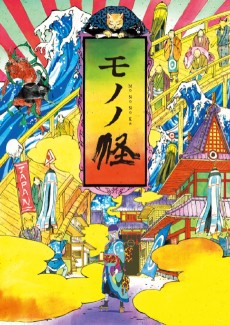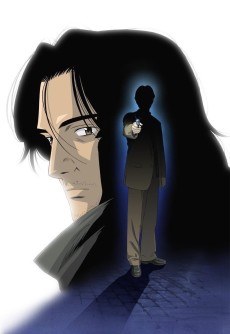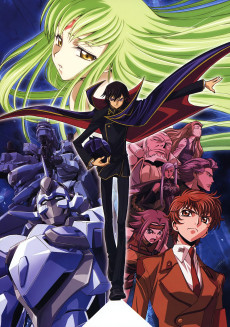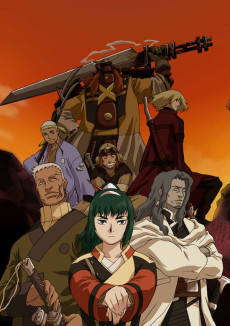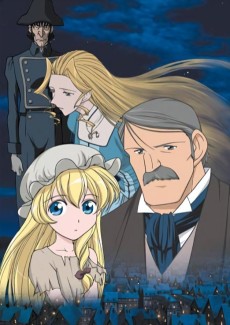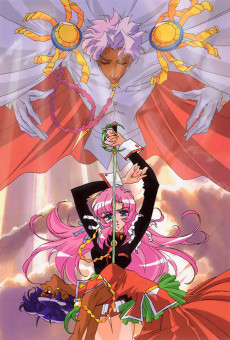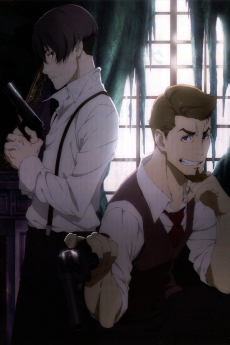GANKUTSUOU
STATUS
COMPLETE
EPISODES
24
RELEASE
March 30, 2005
LENGTH
24 min
DESCRIPTION
Gankutsuou is an anime loosely based on the novel The Count of Monte Cristo by Alexandre Dumas. It tells the story of Albert Morcerf, a young aristocrat who happens to befriend a wealthy nobleman, The Count of Monte Cristo, through a series of bizarre events. Fascinated by the Count's charm, Albert invites him to meet his friends and family, all of whom happen to be part of the upper class society of Paris, France. Unfortunately, little does Albert realize that the Count has ulterior motives in mind.
(Source: MAL Rewrite)
CAST
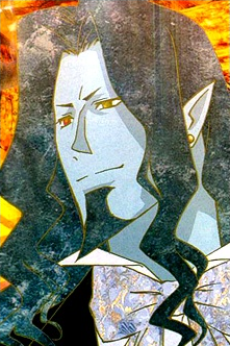
Monte-Cristo Hakushaku
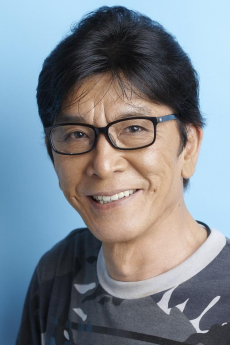
Jouji Nakata
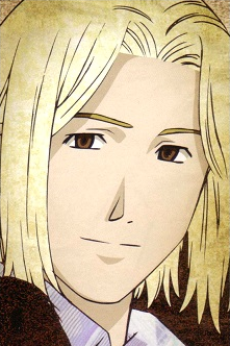
Franz d'Epinay
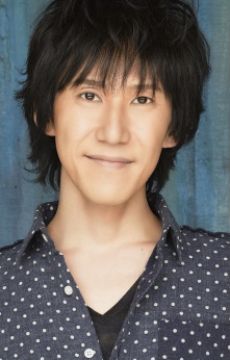
Daisuke Hirakawa
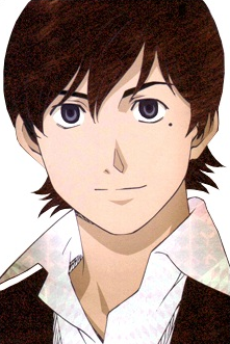
Albert de Morcerf
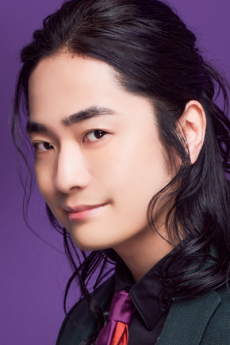
Jun Fukuyama
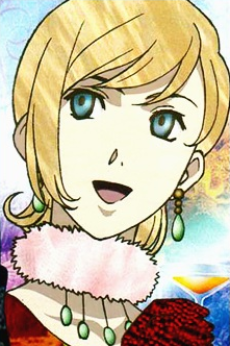
Eugénie Danglars

Chie Nakamura

Haydée Tebelin
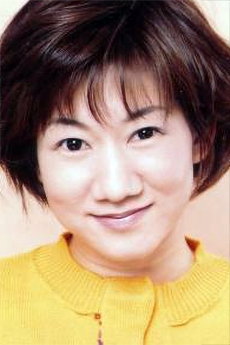
Aki Uechi
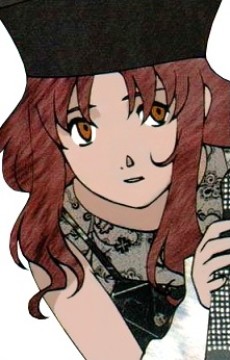
Peppo

Mai Nakahara

Gankutsuou

Yoshinari Torii
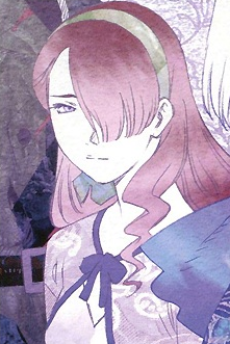
Valentine Villefort
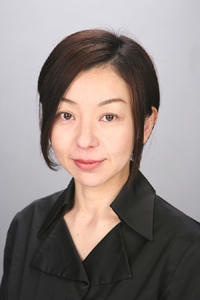
Junko Miura

Andrea Cavalcanti
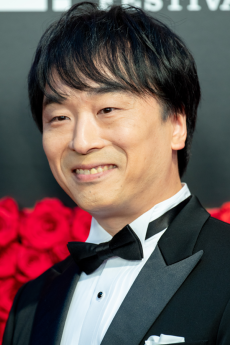
Tomokazu Seki
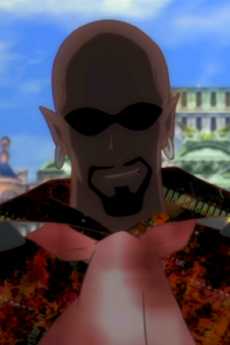
Giovanni Bertuccio
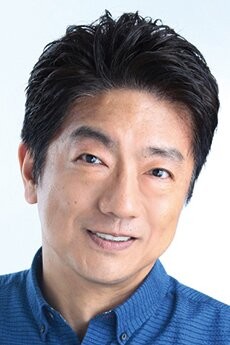
Kouji Ishii
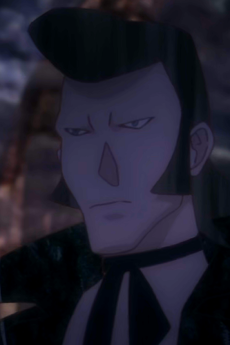
Baptistin
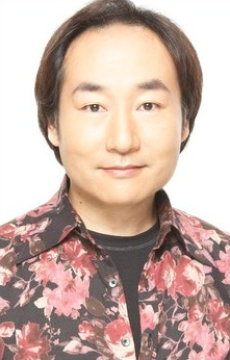
Nobuo Tobita
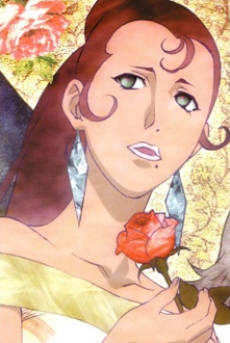
Mercédès Morcerf

Kikuko Inoue
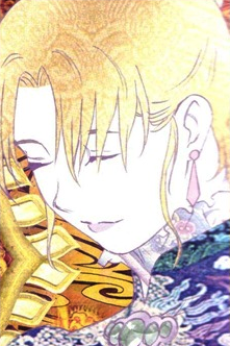
Héloïse Villefort

Kumiko Watanabe
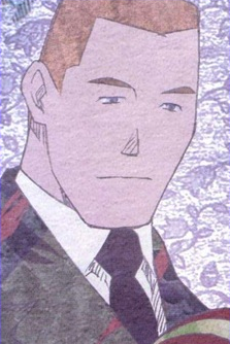
Maximilien Morrel
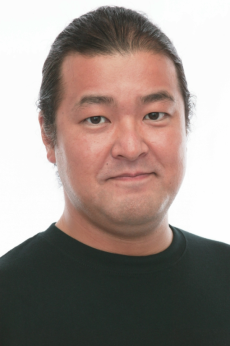
Tetsu Inada
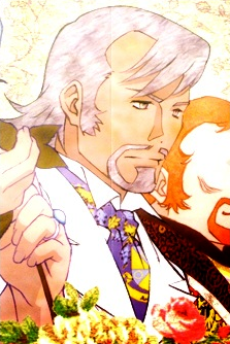
Fernand Morcerf
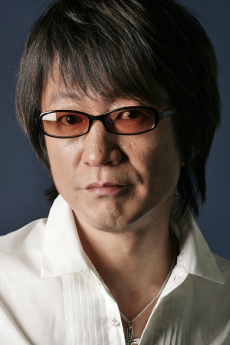
Juurouta Kosugi
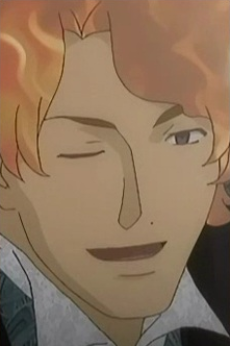
Lucien Debray

Jin Domon
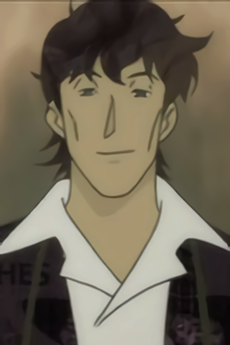
Robert Beauchamp
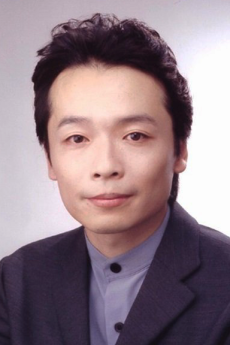
Tetsu Shiratori

Jullian Danglars

Shinpachi Tsuji
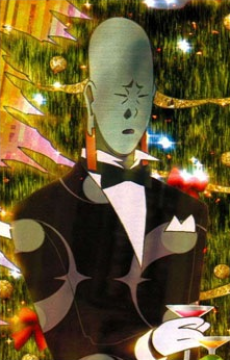
Ali
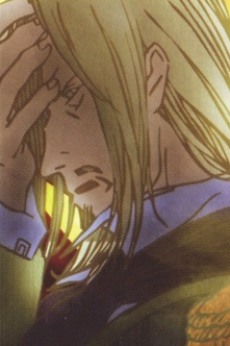
Gerard de Villefort
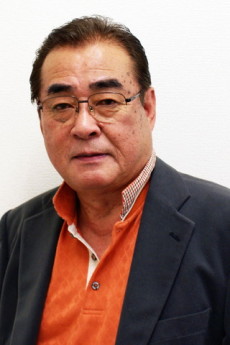
Yousuke Akimoto
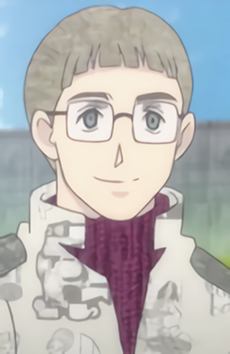
Raoul Château-Renaud

Mito Tougou
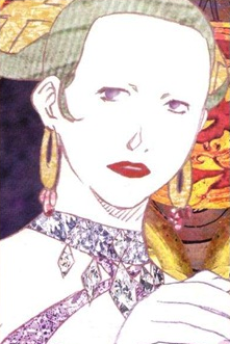
Victoria Danglars

Naoko Matsui

Luigi Vampa

Tamio Sobami
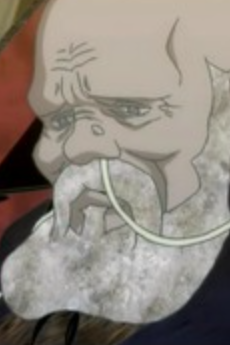
Noirtier de Villefort
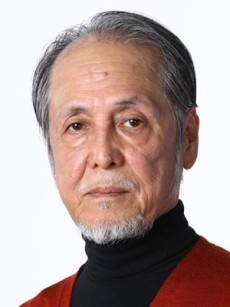
Hirotake Nagata

Michelle

Rio Natsuki
EPISODES
Dubbed
RELATED TO GANKUTSUOU
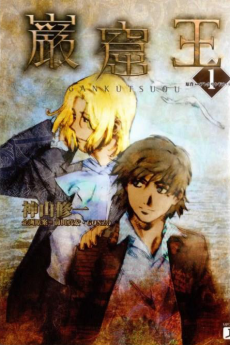 NOVEL DramaGankutsuou
NOVEL DramaGankutsuou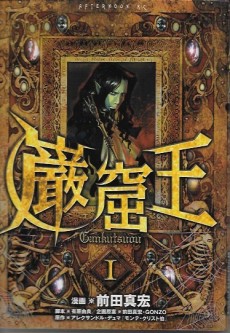 MANGA DramaGankutsuou
MANGA DramaGankutsuouREVIEWS

biogundam
89/100the goat of anime based on old booksContinue on AniListWarning this review contains spoilers
First impression, so one day while I was looking for something interesting and different.
I happened to come across this anime which I found out was based lightly on a very old French novel.
So when first going into this I was kinda expecting some sort of mystery show about this count and who he is and what not,
but as it continues it become increasingly more exciting and engaging as it continued.
When it starts becoming a story of revenge and on the side very interesting 19th century French politics.
In fact the first time I watched it I almost watched half of it before I knew that 2-4 had actually passed.Story, 8/10
In my quest to find high quality anime which has taken me all though the stars,
And after years of looking I had found it in the mysterious individual known as the count of monte cristo who had almost like magic cast a spell on me that made me interested In his mysterious ways.
Just like the way he did with the main character Albert on that fateful night on the moon.This is probably one of the most sophisticated revenge story's I have ever watched in anime or actually in any media so far.
Because It's just handed with such elegance and finesse and it is way far apart from it's more edgy counterparts when it comes to revenge story,
But back it the actual content.The story at first is mainly focused for at lest 14 - 16 episodes the main character and his developing friendship with this mysterious count.
Which I found very interesting to watch.
Not just the relationship itself, but how they use it to explore a lot of the politics and various people.
Which I found very interesting,
Because in quite a few media I have watched they quite often have rich people as evil villains with nothing redeeming about them.
But here it shows you that maybe being on the upper crust isn't exactly is happy as you might expect or that because your rich doesn't mean your don't have your own problems to deal with.
Which I really liked because it being A lot more honest about it and also the culture side of it was also quite interesting also.But back into more detail about my thoughts on albert and the count friendship,
What I think it really interesting and cool about it,
Is that in a way the count is a mentor figure in a way for Albert,
Because at the time he doesn't know what exactly he wants to do with his life and the count comes along as his friend and gives him advice and even helps the main character find his way.
Which is cool to watch.
Even though later you find out that the count was kinda taking him for a ride in order to get his vengeance on certain people.So while I am one the revenge topic,
Which is mostly kicked into over drive after episode 16 and beyond intill the story ends.
Which at first i kinda forgot at first because it wasn't shown that much at first and was more paying attention to the politics and the drama and mystery element.
But when I look back and think about,
It was slowly built up and also very well foreshadowed.
Of course as it goes along it becomes more noticeable that there is something going down.
Which I kinda got wind of around ep 6.
How the revenge plot was done was very cool to watch,
Because it like the spider web level plan here.
With the count slowly spinning his webs and as time goes by the flys start getting trapped in the web and then at the right moment he goes for the kill.So I guess my overall pros for the story is that,
It has very good paceing,
Nothing is don't to fast or to slow it just gets that sweet spot very well.
It very maturely written and quite sophisticated.
Has a interesting setting,
But kind of which more things where explained more.And while I am one that topic I think my major problem which this series.
Is at the ending episodes it goes Michael bay on everything,
Like shit blowing up, choas everywhere, space ship battle in the city with robots,
Which I don't exactly hate or think it doesn't make sence.
But it dose take away the sophistication the story had up to that point.
The last thing I need to address is that the setting doesn't get as fleshed out as it should have.
Like for example there this other factions called the empire which we know little about.
And also they also talk this prince Character quite a bit and they never showed us or gave us any episodes about him.
Even though he was important to the plot.
So just some minor things I noticed.Characters, 7/10
Main character Albert was ok,
He kind of this naive rich kid who doesn't know what he wants to do in life.
Which was interesting and quite a few people can relate to that feeling of not having a porpase in life.
But I did find him very inoreing at times,
Especially with his very naive personally.
Which leads him in lots of situations that could have been avoided with he had a more Little street smarts,
Even if he a rich kid he shouldn't be this clueless to what could happen while he out and about.
Like there one time where he basically is hanging out with this chick and he gets jumped by a gang and kidnapped and it turn out the chick he was with was also involved in it as well.
Then there the other time where the count very clearly explains to him in great detail of how he used him as a tool to get his revenge and there friend ship was basically a lie.
After all that He actually considers the count his friend and even try's to save/ stop him.
I mean why this person who you thought was a true friend has back stabbed you and still want to go back to him.
I guess you can call it noble that he stills cares deeply for his friends,
But at the same time would you really still consider some one a friend if your did somethings like that to you.Now time to talk about the count,
Which is probably one of my favorite anti heroes.
He has a very interesting personality,
He like this very classy gentleman who has this dark side about him.
His back story Was also very interesting.
and just the way he dose things and conducts his busses is just so malicious and well thought out.
And even though his relationship with the main character was kind of a lie,
I feel that deep down he did actually care about him and that he maybe didn't like the fact that he has to back stab this person in order to get his revenge.
But he knew it has to be done.Side characters,
Most of them are some what interesting and they personalitys.
They some of them get there little development and flashing out.
I think what's really cool about all the characters over all is that for the most part they feel real and you can understand the reasons for what that done and how to react to certain situations.Like for example the judges wife Héloïse Villefort
who try's to poison her step daughter and husband not because she hates them exactly , it was more about her son not getting what she felt he deserved and also because I feel she isn't exactly getting the attention she needs and wants as well.
If you get my drift.Or another is the character Maximilien Morel
Who kinda an outsider to the whole high society cultural equation.
But what really interesting about him is that he the outsider looking in and he can see the down sides and the up sides of the under crust that he is slightly a part now.
And he calls them out on anything that seems bull shity.But I feel at the same time,
Feel they made the characters that the count wants to get revenge on quite worse as people.
There done in such a way that the more you Lauren about them the more your likely to say fuck these people and let the count carry out his plan.
Which I wasn't exactly pleased about they could have made it a bit more gray.Art,7/10
Animation looks very good even for the time it came out it looks very nice.
Backgrounds are quite cool.Has a really interesting art style to it,
Every thing looks like a work of art,
Even the outfits have these very crazy patterns and all this over shit.
That just very colorful to look at.It also most the taken a pattern or somethings from the real world into the anime which I think is really cool.
The character designs also look very interesting,
I especially like how the count looksSound, 7/10
Both the op and ending songs are very nice to listen to,
But personally I didn't exactly like them.
But I do feel they are worth checking out even if they're didn't exactly click with me.Ost was great as well,
Wasn't exactly the best but it sounds quite nice to listen to, and if your fan of more classical music then you will probably like this as well.The music and ost as done by these people , Koji Kasamatsu,Reiji Kitazato
and Jean-Jacques Burnel.When I look up Koji Kasamatsu I see that one of things he did was work on the sound for the berserk movie.
When it comes to Reiji Kitazato it seem like there nothing much he done from what I can see,
Just did music on a few out there series which really aren't that important to name.And this dude named Jean-Jacques Burnel,
Who was in a band called The Stranglers which came around during the punk rock phase of music in London in the 70s and is actually still active today.
Which is quite interesting.
So if you have head of this guy and the band he apart of.
Then you might like the music more than I did I guess.Enjoyment, 7/10
What I think I really liked about this anime is that it's basically got everything that got me originally got be into anime in the first place.
it's intelligent and doesn't try to be more than what it is,
Which translates to being pretentious.
I also found it such an engaging watch,
It's everything I asked for in an anime all rolled into one.So I really enjoyed this show as a whole.
Overall, 8/10
I fell this is quite the hard show to recommend to people,
Because it's the type of show that requires a certain person or a mindset to watch and appreciate it for what it is.
So if your into the more classical like story's or you want try out more high quality shows.
Probably check this out,
But you have to make sure you know exactly what your in for.
Because I feel that most people who are into anime and I know this is a bit of generalization.
But your average anime fan isn't going to find this interesting or fun for that matter.
It's the type of show that more for a mature and experienced viewer ship.So if into more flashy shows or are new to anime probably stay away for now and when your ready watch it at your own pace and also at your own risk of being very bored.

TheRealKyuubey
100/100I'll be honest, I like it more than the book.Continue on AniListMadames and Monsieurs, good evening. Tonight, we unfold the tale of Albert de Morcerf, a young parisian aristocrat who has yet to come of age, although he has more woe and devastation hiding beyond that threshold than perhaps any of his contemporaries. He does not yet know of the lies his life was built upon, nor has he any comprehension of what the human soul is capable of. As of the beginning of our tale, he has only one issue on his mind; What haunts his dreams is the announcement of an arranged marriage to an estranged childhood friend, young Eugenie Danglars. Desperate to experience his youth while it is still his, he travels to Luna, an extravagant land of partying and debauchery, and just as he’s about to lay in an alley with a woman who’d caught his eye from the float of a parade, he finds himself at the end of her gun… Both of them.
He’s taken captive by street bandits, and it’s by his good fortune that earlier that very night, he’d made a lifelong friend in a mysterious, lavish older man known only as The Count of Monte Cristo… A man who had earlier placed a game of life or death in Albert’s hands now shows up in the nick of time to save his young friend from that very same game. Albert shows his eternal gratitude by inviting the Count to Paris, to meet his friends and experience high class Parisian society. All is not how it seems, however, as The Count’s arrival marks more than just his temporary residency. All at once, families begin to fall apart, secrets begin to find their way into the light, and sins long since buried and forgotten come back to threaten those who’d once disposed of them. Who is this strange man, with blue skin and an aura of powerful magic? What is his true reason for traveling to Paris? To what end will he stoop to claim satisfaction for a life he was never able to live? And how far will he go before the living embodiment of vengeance is sated?

The first thing you may notice about Gankutsuou: The Count of Monte Cristo is it’s immediately striking visual style, one that I can almost guarantee you’ve never seen before or since. Well, that is, you’ve never seen it to this large of a scale. This series uses an art style called Unmoving Plaid, a style that’s been used many times in American animation to simplify the animation of characters wearing complex patterns on their clothing. To conjure up an accurate visual image, imagine you’re wearing a green shirt in front of a green screen, and the computer replaces the green with Wall-paper. It’s a classic sort of style, and one you wouldn’t expect any animated fiction to get any extended use out of… Which is why it comes as a surprise to many first time watchers when they see the elaborate patterns dancing across the clothing and hair of the characters in this anime.
This choice of art style will prove divisive, and it is a bit of an acquired taste, but it’s used to beautiful effect, even if the necessity of it can sometimes be argued. I would disagree with this argument, of course, because it ultimately serves as the frosting on Gankutsuou’s visual cake. See, this version of The Count of Monte Cristo takes place in a futuristic Sci Fi setting, I’ll say more on that later, and the blend of classic European and space age architecture would look bland if everything looked like your average anime. No, to get the full visual effect, Gonzo employs a lot of very expensive, very smoothly integrated CG backgrounds that are at once both heavily detailed and, on ample occasions, sparkly as all hell. The use of color, particularly in the vast shots of space as well as in a few other surreal settings, is extremely elaborate, and in my opinion, it’s the wall-papery art style that ties it all together. I’ve heard that it’s a curse for viewers with epilepsy, and while I can’t imagine it doing as much harm as a certain notorious Pokemon episode, I can easily see some of you suffering headaches from it.
Of course, we are talking about a Studio Gonzo production, and alas, 2004 was not a good year for them. This was the year they tried to integrate traditional animation with CG in a lot of their shows, and they had some notable failures. 3D water textures in Gantz left the human characters looking like hot garbage, and over eight minutes of Samurai Seven had to be sacrificed to appease the budget, leading to an ugly, ugly, ugly extended sequence where there were no key frames and nothing was on-model. I’d be lying if I said that the more traditional aspects of Gankutsuou didn’t often employ the same style, but it’s used sparingly, and there are only a few times you’ll notice it, perhaps most obviously in a shot where Albert’s friend Franz is sitting up after waking from a night of drunken sleep. The 2D animation isn’t the best I’ve seen, but it’s well directed enough to compensate for it’s worst moments, and the artwork provides ample distraction whenever it needs to. It’s a mild flaw that doesn’t stop the series from upholding it’s acclaim as a visual wonder of the anime medium.
All of the effort and extravagance that went into the artwork and animation also bleeds into the music, which has to be one of the biggest, most elaborate anime soundtracks I’ve ever heard. It informs the story in ways that are both beautiful and purposeful, with every single note proving to be just as important as the words and actions of the characters on screen. The music can stand on it’s own, which is good, because I can’t describe how perfectly utilized it is without gushing about it, so instead, let’s talk about something whose meaning is a little less obvious; The opening and closing themes. I don’t think I’ve ever seen a set of closing and opening themes that have encapsulated the yin and yang aspects of show’s main character before.
The opening theme is, to keep with our theme, not like very many that you’ve seen or heard before. Whereas most openings will try to draw you into their story with colorful images, the faces of all the principal characters, a catchy pop tune and a huge focus on visual direction, Gankutsuou takes a different approach, using a crude style of what looks like oil paintings animated on a drab, shadowy background. The English language song, We Were Lovers by Jean-Jacques Burnel, is a simple piano tune that serves two purposes… It not only tells a vague sort of synopsis of the count’s backstory, particularly with regard to his feelings for his lost love, but it also serves as a metaphor for the smooth, friendly exterior that he uses to gain the affections of everyone he meets.
The closing, You Won’t See Me Coming, is also sung in English, and by the same person as the opening. Posing as the yang to the opening’s yin, and it explodes in your face at the cliff-hanger end of every single episode, featuring screen shots and visuals taken directly from the show and then filtered and distorted until it looks as though some demonic entity has been watching the proceedings from afar. It’s sung from the Count’s perspective, but in terms of tone, it feels far more like the theme song to the mysterious being Gankutsuou, although you won’t know to make this distinction in your head until several spoiler-things have happened later in the story. Up until then, there’s no shame whatsoever in being satisfied with the idea that these evil thoughts, these malevolent lyrics, are what’s truly going through The count’s head as he gently smiles at his worst enemies.
The English dub is hit or miss, as it’s perfectly fine in it’s own right, but it still falters a bit in comparison to the excellent Japanese track. The one area where they needed to knock it out of the park is with The Count himself, a sort of overlord character who manipulates people and pulls their strings not only from the shadows, but right in their faces, while they mold like putty in his hands. This kind of character would need to be played by someone with a deep, throaty sort of voice, which can simultaneously be diabolical and soothing, but can also turn the evil maniac in himself up to 11 and let loose with a deliciously triumphant villainous laugh when things are going his way.
In Japan, the answer they found was with Jouji “George” Nakata, otherwise known as Japanese Alucard, and the second I say that, you’re going to guess that the dub cast Crispin Freeman. Now, I’m not going to say that Crispin couldn’t have pulled off this role… He would have slaughtered it, quite frankly… But Geneon actually found someone better in the somewhat less well-known Jamieson Price, and I’ve been a fan of his ever since I heard him in this. Price IS the Count, to the extent that I can’t read the novel without hearing his voice in my head. This phenomenon doesn’t happen with Albert, however, as Johnny Yong Bosch’s performance isn’t quite as magical as that of his Excellency. Albert de Morcerf is a character that could easily be played by someone with a generic voice, and Johnny Yong Bosch… does that. His ability to act does manage to infuse the character with pride and youthful enthusiasm, and I’m not sure how the part could have been played better, but it doesn’t leave much of a mark.
Michelle Ruff does a much better job with Eugenie, whose role has been radically altered from the book. She plays the part as though she’s been frustrated by her station in life for so long that she has difficulty believing in any reprieve, even when they’re right in front of her. She becomes more warm and supportive whenever it’s called for, and carries herself with sincerity through even the most bleak and terrible events. Tony Oliver is excellent as the idealistic Maximillian Morrel, whose role in the story has actually been downgraded, but thankfully not at the cost of his character. On the flipside, Albert’s best friend Franz D’Epinay, has had his role greatly expanded, elevating him from a person who was away for a majority of the events in the book to someone who is not only there for the majority of the story, but actually takes an active role in it. He’s an extremely important character now, which is why it’s so disappointing that they cast Ezra Weisz, the monotonous robot of an actor whom I already tore into in my review of Vampire Knight. Stilted and devoid of personality, he was possibly the worst possible choice for the role.
The rest of the cast do their jobs adequately, pronouncing french words more or less correctly while for some reason not using french accents… Come on, you know they could have done it… But there are two standouts that I have to call attention to. The first one you may have completely glanced over, because this series came out at a time where she was still using her favorite old alias, Jennifer Sekiguchi. Stephanie Sheh plays The Count’s… I don’t know what her title is. Servant? Escort? Pet? Whatever, she plays the character as soft voiced and wistful, like her common typecasting with some angst injected into it, but when her moment in the script comes, she rises to the occasion with a righteous fury that will leave you with chills. The other is Carrie Savage playing a transgendered maid at the Morcerf house, whose dialogue is full of double-entendres and duplicitous comments, as though she’s teasing both Albert and the viewer about where her intentions truly lie. The sub is quite a bit better, but you can watch pretty much either one depending on your preferences.
So, I mentioned earlier in the review that this story takes place in a futuristic setting. Some of you may have read that, and gotten a little anxious while involuntarily recalling the Disney Film Treasure Planet, as those properties, like Gankutsuou, take insane amounts of liberties with classic, established literary masterpieces. I honestly believe that it works in all the ways that those other two adaptations didn’t, but in order to explain why, I’m going to have to explain why this space traveling, alien accommodating world isn’t as futuristic as it sounds. Yes, there’s technology in this show that our society has yet to reach… Voice controlled holograms, robotic horses, interstellar politics… And yet, the principal characters all live in what appears to be 19th century France, from the clothing to the architecture. To make things more confusing, the automobiles that are present throughout the story seem to have been crafted way after the turn of that century.
Even with the year in universe being in the 5000s, I still think it would be more appropriate to call it an Anachronistic setting than a Futuristic setting. While Treasure Planet could also be considered anachronistic, it’s still deeply rooted in the trends and demographics of the time it was released, therefore dating it. Hell, look at all the sky-high skateboarding! Gankutsuou doesn’t pander to the audience in this way, or really in any way, as it’s stark avoidance of anime tropes will prove, and as a result, it’s anachronistic nature gives it an advantage that countless other anime and movies have struggled for… Timelessness. A sense of familiarity in an alien setting. A story that will never feel lame or dated, regardless of how long after it’s release you’ve decided to watch it. And this is a feature that’s unique to the anime, as the original novel contains many elements that will prove problematic to today’s readers. For example, The Count has a mute black slave who’s pleased as punch to be working for him. The anime reduced his role, changed him into an alien, and made another more important member of his posse black instead. The novel contains an outspoken man-hating feminist who’s also secretly a lesbian… A troublingly misogynistic character in today’s world, but she’s completely rewritten in the anime. Part of a good adaptation is to fix these kinds of problems.
A far less fortunate part of adaptation is that you have to cut a 1078 page novel down to a more serviceable length. You could of course go the easy route and adapt the abridged novel, you know, if you want your adaptation to suck, but the truth is that adapting a classic novel to a new medium is a minefield of a task. The Jim Caviezal movie was okay in it’s own right, but it changed so many things… About half of which made any earthly sense, I mean come on, Albert being the Count’s biological son? That it really doesn’t FEEL like The Count of Monte Cristo. Well, Gankutsuou had an answer to that, and it turns out it was pretty radical. They skipped the first half of the book, and made Albert the main character, starting out the tale with his and Franz meeting The Count on Luna..
Before you cry foul on this, I’m going to be perfectly blunt; I’ve always thought the weakest element of the original novel was The Count himself. He starts off as this perfect goody two shoes who has everything going his way, until he gets betrayed because his friends are assholes who want what he has. He’s kind of like Johnny from The Room, but instead of killing himself, he escapes and becomes the fantasy of any bullied kid who ever thought “Wow, wouldn’t it be awesome if I went to the reunion as a billionaire celebrity with a smoking hot trophy wife, and then all those jerks lives just start going to shit around me out of jealousy!” And the reason I make THAT comparison is because, like the reunion fantasy, The Count’s ascension in the novel is a tough pill to swallow. He basically becomes a Mary-Sue through luck and getting rewarded for being awesome, and to make matters worse, there’s no mystery about him. We’re in on the plan from the start, yet the novel still goes to the trouble of reading like his identity is one big secret.
Aside from the Abbe Faria material, I’ve honestly found the first half of the book to be kind of boring, and I never truly feel engaged until The Count meets Albert and his plan starts to go into motion. I’m obviously not some literary expert who has any real credentials to criticize the works that have shaped fiction, but I can’t help feeling like Albert is a better focal point for this story than The Count is. By telling the story from his point of view, there’s more of a solid mystery behind The Count, his actions, and the unsettling behavior of the adult characters whose crimes are completely unknown to the viewer. Not only that, but Albert starts off the story believing hard in what he asserts to be the positive aspects of the nobility that he was born into… He believes the lies his parents told him, and through him, we’re not sure until late in the game whether or not The Count is justified in digging up everyone’s dirty laundry to destroy their lives and families, which helps for the altered story to retain the moral ambiguity of the novel.
I’m not going to pretend Albert isn’t annoying sometimes… He’s naive, and he makes a lot of stupid decisions, but these are the flaws that make him relatable, and they’re addressed in the story. I also won’t pretend that the story as you may remember it isn’t turned directly upside down to accommodate him as the star. His complicated relationship with Eugenie is given far more focus, and two characters from the novel have their roles expanded to aid in his development… The first is Franz, who advises him, may or may not actually be in love with him(it’s implied), and explores The Count’s past to counteract Albert’s blind loyalty to the titular character. The second is Peppo, who’s only mentioned in passing in the novel, but helps to put doubt into Albert’s mind about his parents’ romance in the anime. Of course, it helps that they both exist to give him people to talk to other than himself. His other friends from the novel are present, from Lucien Debray to Valentine De Villefort, and while they’ve all taken smaller roles than originally intended, they still get their chances to shine, and their effects on the story have been largely retained. The Count himself feels far more omnipotent and vampiric, and swapping out Abbe Faria for an actual supernatural entity does a world of difference in explaining how he came to power. There are a few changes that don’t really feel necessary… Two characters who were supposed to have died to make The Count question his motives go insane instead, for example… But for the most part, every change that was made is an important cog in an all new machine that tells the story differently, while still remaining faithful to the themes and tone of the book.
Of course this series isn’t perfect… No anime is, really. There are a few minor flaws, and one of the most famous ones is in the second to last episode, where The Count’s plan finally hits it’s climax in ways that are kind of dumb, and rely on clichés to an uncharacteristic degree. It’s not a bad ending, but the series clearly deserved better. The other, and this is more MY nitpick, is that the villains of the story feel a bit more one dimensional than they did in the novel. Don’t get me wrong, they were bad people, but there was more to their personalities than just their major flaws. Even before they get systematically broken down to their lowest levels, they still feel a tad unrealistic. Also, and this is something that was pointed out to me by an online friend, this society full of futuristic society doesn’t include any cell phones. This doesn’t actually bother me, though… It doesn’t make much logical sense, but their presence would kind of break the story. I mean, Frodo COULD have flown to Mordor on an eagle, but would you enjoy that story? I wouldn’t.

Gankutsuou: The Count of Monte Cristo was originally available from Geneon Entertainment, which means it went out of print for a while before Funimation rescued and rereleased it as a SAVE edition DVD set. Sadly, at the time of this writing, the series is in the process of going out of print, so I’d highly recommend you buy a copy for yourself before the price starts to skyrocket. The original novel by Alexandre Dumas is available from most reputable booksellers, but make sure you don’t buy an abridged version by mistake. There have been thirteen movies and six TV adaptations throughout the years, as well as a couple of musicals, but I’ve yet to experience any of it either than the anime and the American movie, and the 1934 film that I actually really enjoyed. A three volume manga is also available stateside from Del Rey.
Gankutsuou isn’t just a worthy adaptation of the original novel… I feel as though it actually improved upon it in a lot of ways. The revenge plot is exciting, with The Count toying with his enemies as though he were the world’s most confident chess player, but with a stronger focus on the rest of the cast, you also get a much clearer message about how the sins of the past can return to haunt you long after they’ve been forgotten. The relationship between Albert, Eugenie and Franz is rewritten to run parallel in a lot of ways to the early friendship of Edmund, Fernand and Mercedes, offering a tragic reminder of what The Count could have had, sitting right there in front of his face the entire series. The story is executed in such a way that every single episode has you yearning to uncover more information and experience the next big reveal, and in general, it just works so much more of a fulfilling level that I can easily forgive the few nitpicks I may have had. I Give Gankutsuou: The Count of Monte Cristo a 10/10.

AndoCommando
95/100An overlooked gem that when given attention shines ever so brightly.Continue on AniListAmbition. An earnest desire for achievement or distinction and the willingness to strive for such an attainment is often fundamental in success. It produces action, bringing forth moods of passion, emotion and a yearning love for the endeavour. This is especially so with art, where the skill and craftmanship of creators are beared on display, readily available for consumers to take in and experience for themselves. However, in recent times one could argue that overall such craftmanship seems to have dwindled overtime, instead reverting to complacency in one’s ability to prosper. No longer when writing a story is a high level of skill required when accompanied with breath-taking visuals, nor is impressive production necessary for adapting acclaimed literature. Today, ambition appears no longer appreciated as it once was, and honestly, this does seem rational: why take a chance on something new and bold when settling on success still grants enough in return? It is this mindset that I sincerely believe breeds mediocrity whilst leaving those who dare try otherwise in the dust, but I would hope for the opposite; where originality is valued amongst the familiar crowd and if successful, could very well turn out a classic which stands the test of time.
With that said… Madames and Monsieurs, good evening.
‘High above in the opera box a figure entered. Removing his top hat revealed streaming ripples of hair, his skin ghostly blue. The singer steps forward, hands outstretched as she came closer, her voice lifting higher and higher. He grasped a bouquet of flowers and once reached her climax threw it to her, leaving her audience in wonder; perplexed as well as in awe. He bowed among the applaud of many but to one soul in particular. Of this moment he knew tonight marked a new dawn – this shall be the prelude to vengeance.’
Gankutsuou: The Count of Monte Cristo is one such work of art that seems driven on ambition, exuding a distinct, lavish style unparalleled for its time and ever since has never been replicated to the same magnitude. There always lies a certain level of tension whenever adapting a classic adored by many, yet here lies not only a competent retelling of arguably the greatest lovers revenge piece ever put to paper, but a fantastic re-imagining able to stand on its own merit as a masterclass of storytelling. Rather than simply applying a shiny new aesthetic coat to fit a tried-and-true formula, Gankutsuou takes strides in significant changes to allow core facets from the original narrative to align seamlessly in this new world. The setting: Paris, Rome and other major cities used in the original are replaced by entire planets and sectors of the galaxy, each with their own set customs both suiting the sci-fi setting whilst matching mannerisms flaunted from characters near identic to the source material. Through this, the majority of characters are quintessentially the same for both versions, with their French names, relationship dynamics and mentalities crossing over smoothly. In short, it effectively manages to transfer the culture of 19th century Europe into one’s depiction of the 6th millennium without feeling out of place. The result is a rich world where spaceships, aliens and robotic horses are considered the norm, alongside fashion, architecture and entertainment more befitting of the Renaissance period than anything in the distant future. It’s a change of scenery more appropriate to call anachronistic than futuristic, projecting a sense of familiarity amidst the otherwise alien world that separates Gankutsuou from every other iteration of Dumas’ opus. But there still lies more prominent changes with respect to the novel.
The most obvious point of divergence between the original and this adaptation lies in their point of perspective; the former being an enduring melodrama of a man wrongfully convicted who enacts revenge on those who ruined his previous life. Whereas here the retribution played out is portrayed as a tragedy, fixated with the corrosive effect vengeance may have when framed through the lives of what could be considered as “collateral damage”. The most effective way Gankutsuou achieves this is by beginning halfway into the overarching plot, trimming huge swaths of unnecessary content while focusing primarily on the victims within this tangled web of one man’s vengeance. Most notably is Albert de Morcef, a young partisan who unbeknownst holds a greater grief and anguish than his contemporaries know. Displeased with the confines of his own life and desperate to seek out pleasure while he still can, almost as if by chance he meets and is immediately captivated by a mysterious stranger known only as “The Count of Monte Cristo”. He invites Albert to dine with him and partake in a game of fate, gambling lives under the illusion of choice. An enthralling experience, one the naïve hedonist yearns for more of, offers to be the man’s guide for reintegrating into aristocracy, entirely unsuspecting of the danger he has welcomed into his household.
“There is no such thing as coincidence. Everything happens out of necessity.”
Albert acts as the catalyst that puts the Count’s plan into action. Concomitantly strung within a tangled web of deception, greeting the spider readily descending on its prey. Of course, this web only appears as mere strands barely connecting to one another at first, allowing for the story to unravel in thrilling suspense and ambience. As the narrative continues along its own thread, the supposed “first half” of the story is subtly revealed moments at a time, unveiling the true motives behind the Count’s revenge in parallel to his plan enacted out in real time. The pacing of such is truly sublime: key information slowly leaked across the series’ runtime, letting the viewer tie the knots themselves, coupled with asphyxiating cliff-hangers that do enough to maintain excitement and continually upholds a sense of curiosity for what is to come. It delivers on an engrossing tale specifically to those unfamiliar with the source material, however it still remains immensely enjoyable for those experienced with the classic version also. Despite creating a mystery from the most well-known part, the writing here is astute; clever enough to realise this fact and takes careful steps that eventually peel away from the canon in order to move in its own direction, adding extra layers of mystery and surprises to fit with the original whilst feeling fresh at the same time.
Although this tale is told from Albert’s point of view, the Count himself is without question the star of the show. A master manipulator, using his limitless amount of wealth, charm and guile to play everyone around him like pieces on a chessboard. His ability to shrewdly influence others from even the simplest of conversations is surely admirable to witness, but like a true mastermind he plays on the weaknesses of his adversaries. He creates the circumstances required where they cannot resist exposing their true nature: lust, greed, any immoral act they hold dear are brought to light, and he takes delight in such. An enigma, constantly shrouded in an aura of mystique both frightening and fascinating, his very presence begs one wanting to know more, and sometimes learning more only brings forth more questioning. Just who is the Count of Monte Cristo? Vampiric in appearance and devilish by nature, suave as well as sinister. Controlled chaos… yet also capricious. He embodies that of a man hollowed out by revenge, but at times still appears to have a heart. It’s near impossible to determine all his actions as either manipulations or stemming from true emotion, and this intricacy further makes the man such a beloved character in my eyes, more akin to a compelling anti-hero than the dastardly villain the story portrays him out to be. Regardless of how one views the Count in that regard, he holds an unmistakable charisma setting him apart from every other character. Whenever the Count is present on screen, he demands the full attention of every viewer, all heeding on every word he speaks. His words, often providing the best insight into the creation and complexity that is the Count of Monte Cristo:
“In the darkness, I awaited the dawn. And once dawn came, I cursed my flesh until night fell once more. I even prayed that I would lose my sanity. But those prayers went unheeded. I even strove for death, but the Devil’s cold, pitiless hand held me back.”
The Count and Albert are who ultimately carry this tale; the Count being cause for the mystery and overarching main plotline, with Albert contributing his point of view alongside the struggles attached with being at the centre of it all. Through Albert’s eyes a spotlight is cast upon numerous characters, each with believable characterization and strong chemistry that lends well to the dramatic story playing out. From his arranged fiancé Eugenie who constantly desires for independence, to his best friend Franz, a fellow partisan constantly involved in Albert’s affairs, frequently lending himself as a voice of reason whilst concurrently also directly affected at a similar degree as Albert courtesy of the Count – all are welcome expansions to their development compared to the source material where they barely held any relevance. Even characters who have their roles downgraded in this version are not relegated at the cost of their charm and never feel out of place. Everyone involved in Gankutsuou is complicated, entwined in a complex network of connections with each other and while some eventually fall by the wayside, a great number of them remain integral to the ongoing story.
Albert in many ways represents what the Count is not. Aside from being a very anime typical kind-hearted protagonist too credulous for his own good, from the beginning of the anime he expresses aspirations of breaking free from the confinements of his dull life that soon follows with him demonstrating clear naivete and general fragility. Albert is immature, often showcasing foolishness stemming from his young age and privileged aristocratic lifestyle. All and more play into why he is so easily enamoured by the Count’s mysticism. Albert is the most central character in the show, with his innocent disposition and despair suffered serving as the metric for drama to spring from. He is probably the most criticized part of the series, but as a sheltered 15-year old boy most of his actions can be considered as expected and these faults are what arguably make him oddly relatable. Alongside his friends, they all signify a “changing of the guard” of sorts, with their parents – all important and respected noblemen – representing established customs and traditions of their society, held atop an old, corrupt and overall defective order that forces others to accept it as they hold the power. But this new generation strive for a better tomorrow; one based of personal freedom, love and hope. Simultaneously involved is the Count, bringing about revolution, justice and a destruction for the establishment that wronged him, but also one of sorrow and chaos birthed from retribution. Interestingly enough, the Count does further allow for Albert and others to achieve their ideals, but there eventually lies a crossroad between both parties. This consequent clash also impacting the Count’s own inner conflict, with Albert reminding him of his past trusting nature, yet still driven by a need for revenge. At its climax, viewers bear witness to how far the Count would go through with his vengeance, and how far Albert would reach out to him.
“Everyone has a sword within their hearts; the purer the heart, the sharper the sword.”
The aesthetic choices made for Gankutsuou are what instantly set the series apart from practically every other anime currently in existence and is likely to be what makes or breaks the series for viewers. Personally, I found the artistic direction near impeccable, crafting the best visual definition possible for the term psychedelic. Director Mahiro Maeda had a clear vision for this anime, using Western impressionism and Ukiyo-e as inspiration for an art-style that beautifully blends the designs of classic European and space age to form this spectacular kaleidoscope of textures, with elaborate sets such as the Count’s household appearing more like a dream arthouse than anything remotely realistic. Almost every scene at the beginning of Gankutsuou utilizes various bright textures that immediately grab one’s attention, before slowly reverting to a neutered-down colour palette more welcoming to the eyes. These textures also provide an almost indirect means of characterization with the clothing worn and gorgeous imagery saturated across the series. Its distinct animation uses computer graphics to overlay bright colours and multiple background layers that blends the various animation styles used into scenes rather well. The result was something both complex and minimalistic that adds more value to character gestures and expressions. The staff wanted to create a show that “talked” to viewers, something that from my perspective was a success. The production is not perfect though, as CG still manages to come off jarring in the most climactic scenes. Studio Gonzo was behind the production for this anime, around a time where integrating traditional animation with CG was more often than not the norm for them, repeatedly receiving criticism for many lacklustre attempts. But with an anime so immaculate and extravagant in its design and surreal art-style, it barely amounts to a hindrance that is easily outweighed by the show’s visual strengths.
Much like the artistic endeavours that went into the visual side of Gankutsuou, the music accompanied is also masterful in its own right. The series features a strong soundtrack comprised of various classical tracks that flawlessly set the tone and ambience for each and every scene, lifting the dramatic moments to even greater heights. Ranging from serene and charming melodies to the more haunting and thrilling themes that aid immensely in the narrative conclusion of each episode, leaving viewers on the edge of their seats waiting eagerly for more. Jean-Jacques Burnel both composed and performed the opening and ending themes that were each a delight. The opening “We Were Lovers” involves a simple piano piece, bringing a softer nostalgic sound that draws viewers in, with lyrics vaguely describing lost love that speaks true of the Count’s background. The ending sequence “You Won’t See Me Coming” is a stark contrast to the former, bursting after every cliff-hanger with an energetic number along with distorted visuals that match the series far more as a thrilling drama. The voice acting is incredible across the board for both the dubbed and subbed version, with Jamieson Price and Jouji Nakata both being splendid standouts as the voices behind the Count. Overall it comes down to preference. I was more in favour of the English dub, but you cannot go wrong either way for this series.
Gankutsuou might be one of the closest examples of anime genuinely being considered a work of art. A beautiful series, artistically daring and meticulously plotted, each of its individual facets come together as an overlooked gem that when given the proper attention, shines ever so brightly. Transposing a time-treasured tale from one medium to another will always detract some for fear of ruining the beloved original story. But classics are eternal, and through reimagining old works in a new light they are enriched, able to awaken the love and respect of many generations that follow, staying in our hearts forever.
“All human wisdom is contained in these two words - Wait and Hope.”
SIMILAR ANIMES YOU MAY LIKE
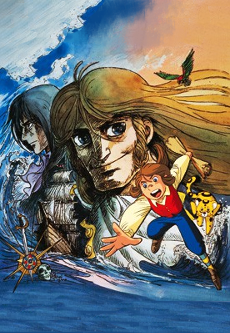 ANIME AdventureTakarajima
ANIME AdventureTakarajima ANIME DramaRomeo x Juliet
ANIME DramaRomeo x Juliet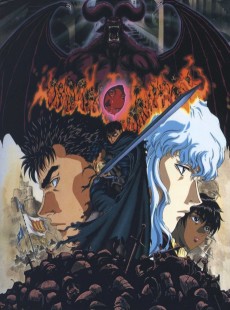 ANIME ActionKenpuu Denki Berserk
ANIME ActionKenpuu Denki Berserk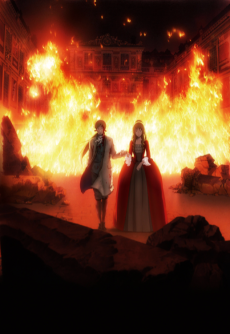 ANIME MysteryLe Chevalier D'Eon
ANIME MysteryLe Chevalier D'Eon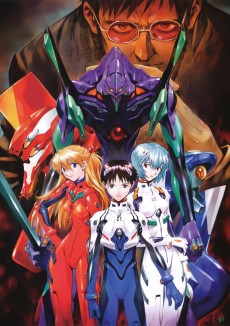 ANIME ActionShin Seiki Evangelion
ANIME ActionShin Seiki Evangelion
SCORE
- (3.95/5)
MORE INFO
Ended inMarch 30, 2005
Main Studio GONZO
Favorited by 1,279 Users


